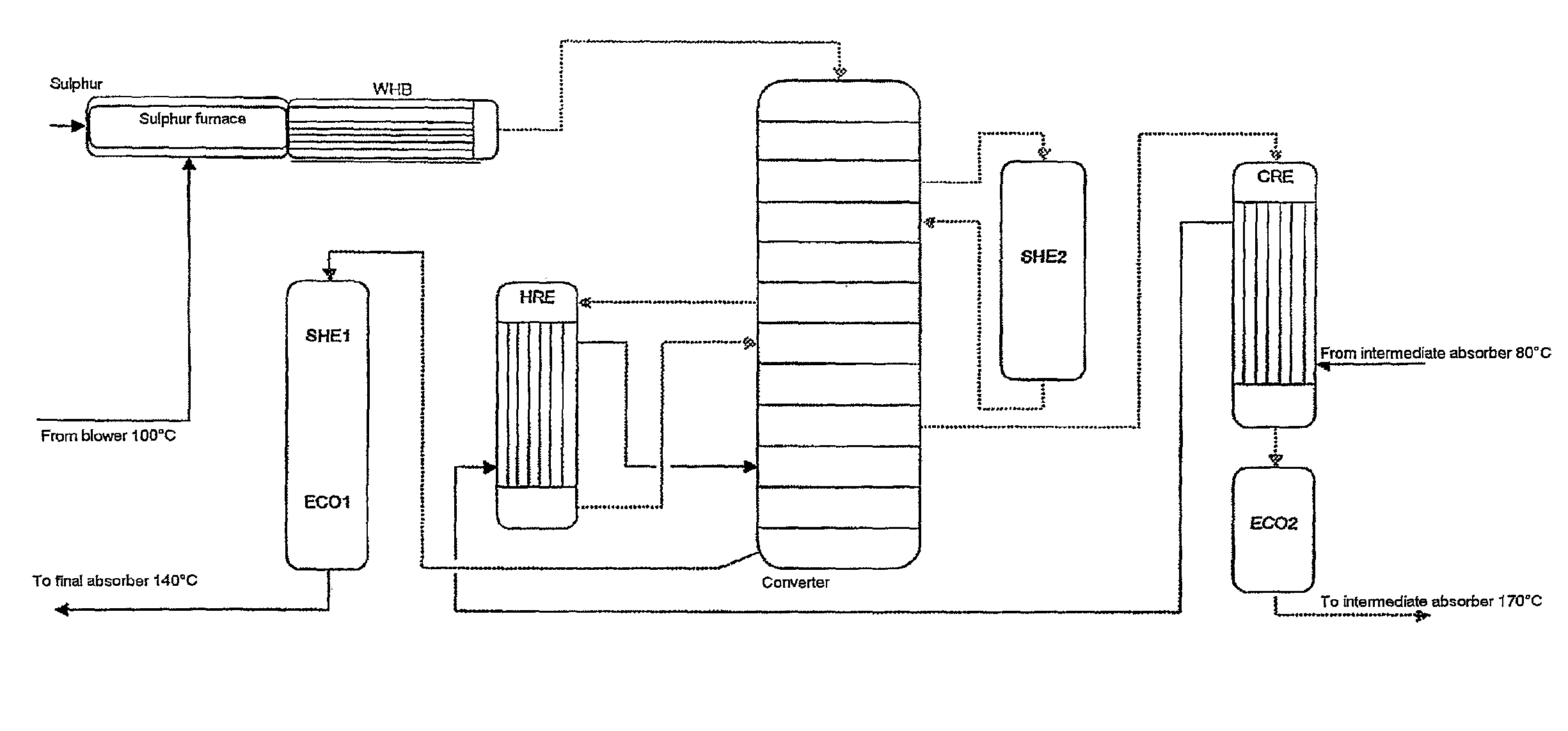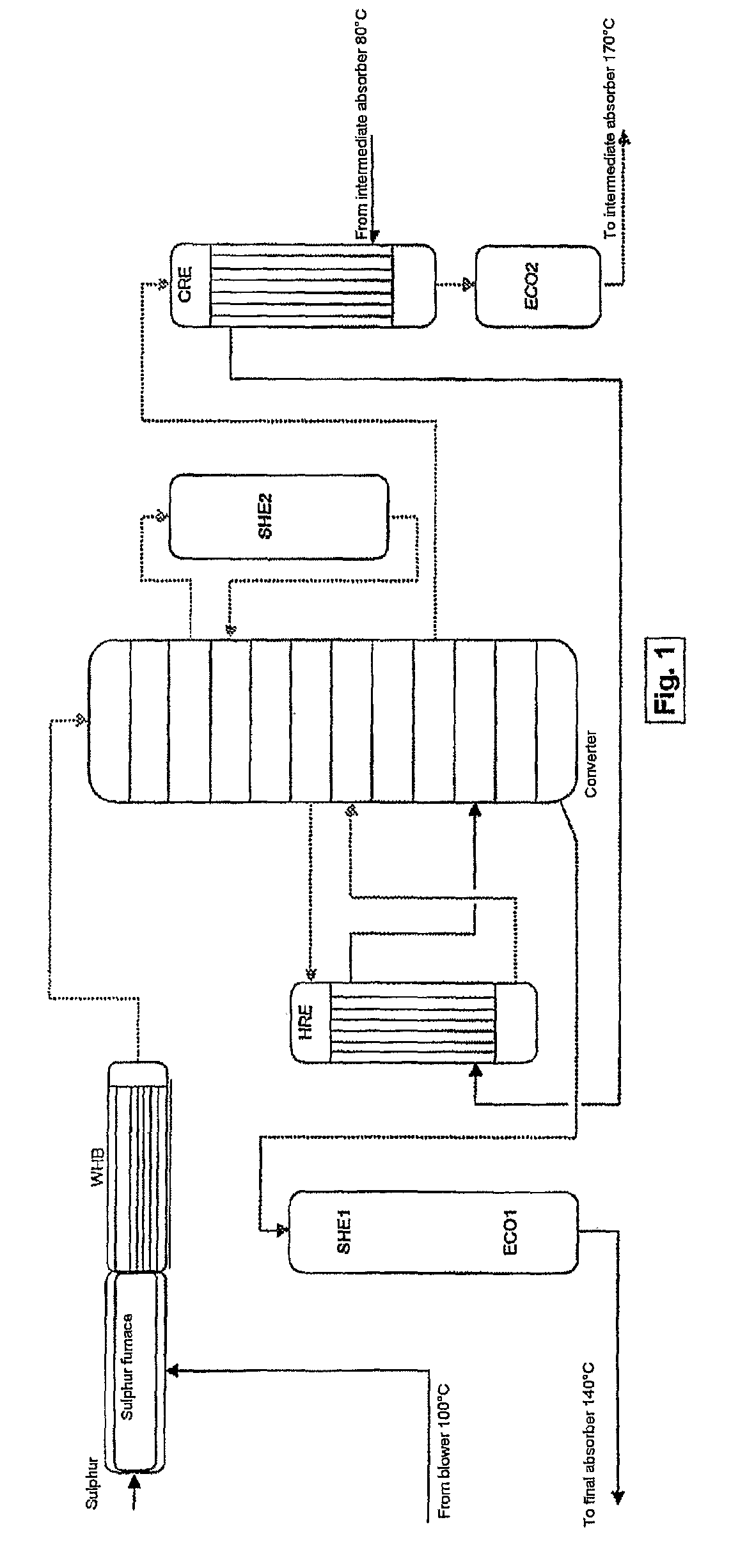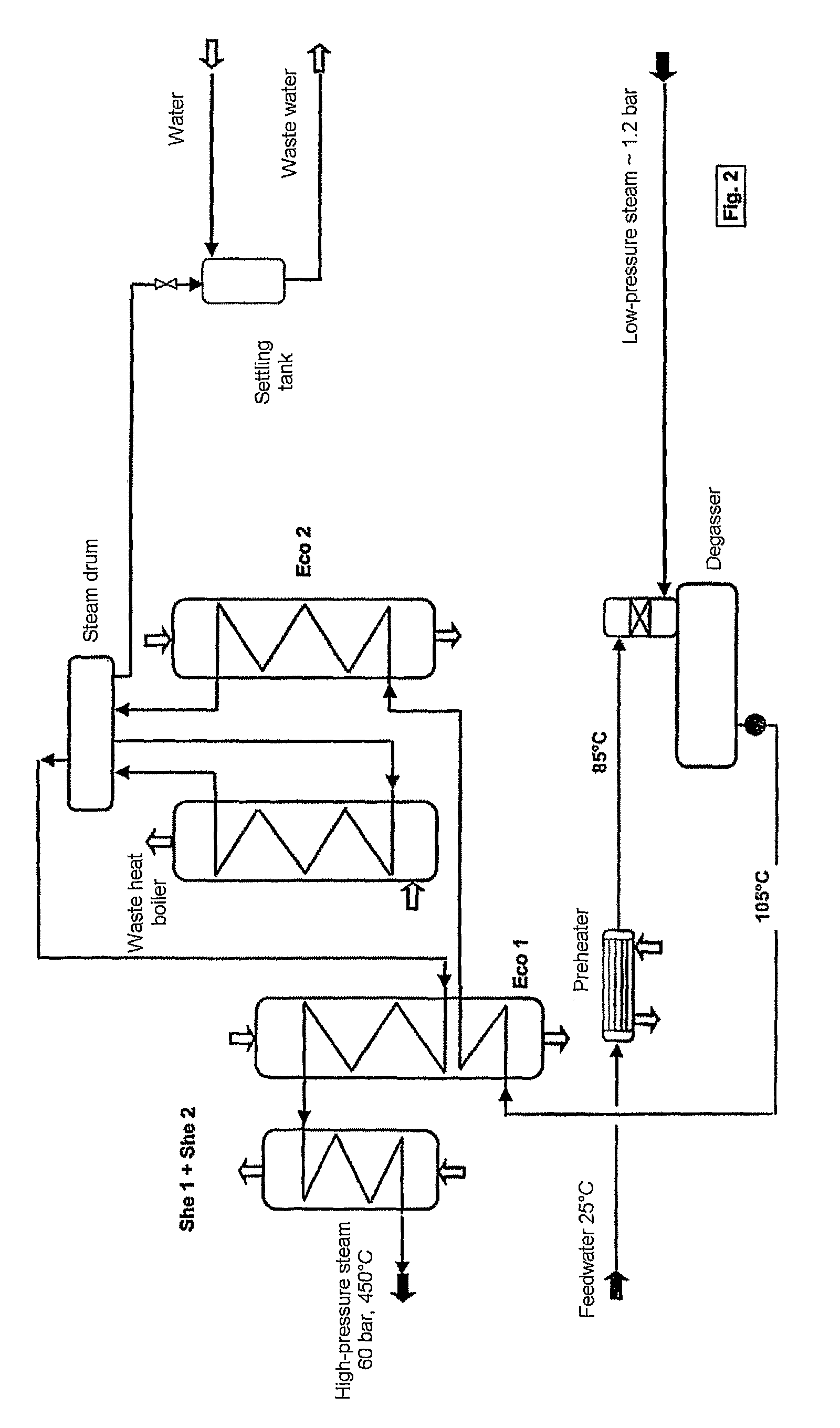Process and plant for the production of sulphuric acid
a technology of sulphuric acid and process, which is applied in the direction of sulfur compounds, energy input, sulfur preparation/purification, etc., can solve the problems of sulphuric acid, the degree of energy conversion for high-pressure steam generation is restricted, and the cost of raw materials sulphur often significantly exceeds the income which can be realized, so as to improve the utilization of heat.
- Summary
- Abstract
- Description
- Claims
- Application Information
AI Technical Summary
Benefits of technology
Problems solved by technology
Method used
Image
Examples
example 1
[0047]FIG. 1 shows a conventional double catalysis contact plant, in which the economizers ECO1 and ECO2 are each arranged directly in the gas stream upstream of the final absorption and intermediate absorption, respectively. The gas outlet temperature is typically 140° C. at the outlet of ECO1 and 170° C. at the outlet of ECO2, with the two economizers being connected either in series or in parallel on the water side, and the boiler feedwater fed to the plant being at a temperature of typically 105° C.
example 2
[0048]FIG. 2 shows the corresponding conventional water or steam circuit. The preheater shown in the feedwater inlet is in this case fed on the shell side with hot sulphuric acid from the absorption part, with acid temperatures of 60-120° C. typically occurring and the feedwater being heated from typically 20-40° C. to approx. 85-90° C.
example 3
[0049]FIG. 3 shows a double catalysis contact plant, in which the economizers ECO1 and ECO2 are arranged in such a way that they can be fed either in series or in parallel with boiler feedwater at typically 175°, and consequently the gas outlet temperatures at these apparatuses cannot be lower than this temperature of the boiler feedwater, but rather are typically 200° C. and 334° C., respectively. The residual gas heat is in this case utilized to partially heat the gas from the intermediate absorption in the CRE and / or to preheat or heat demineralized water. The gas temperature upstream of the intermediate or final absorption is typically 160° C. at the water heater and 140° C. at the heat exchanger CRE, which means therefore that the heat quantity transferred to the high-pressure steam generators (WHB, 1, ECO2, SHE1, SHE2) within the contact system is identical to that of Example 1. The water heater mentioned in FIG. 3 in this case serves to preheat the “cold” feedwater prior to t...
PUM
| Property | Measurement | Unit |
|---|---|---|
| temperature | aaaaa | aaaaa |
| temperature | aaaaa | aaaaa |
| temperature | aaaaa | aaaaa |
Abstract
Description
Claims
Application Information
 Login to View More
Login to View More - R&D
- Intellectual Property
- Life Sciences
- Materials
- Tech Scout
- Unparalleled Data Quality
- Higher Quality Content
- 60% Fewer Hallucinations
Browse by: Latest US Patents, China's latest patents, Technical Efficacy Thesaurus, Application Domain, Technology Topic, Popular Technical Reports.
© 2025 PatSnap. All rights reserved.Legal|Privacy policy|Modern Slavery Act Transparency Statement|Sitemap|About US| Contact US: help@patsnap.com



